REPA-E: Unlocking VAE for End-to-End Tuning of Latent Diffusion Transformers
Zhenchang Xing2 · Saining Xie3 · Liang Zheng1
1 Australian National University 2Data61-CSIRO 3New York University
*Project Lead
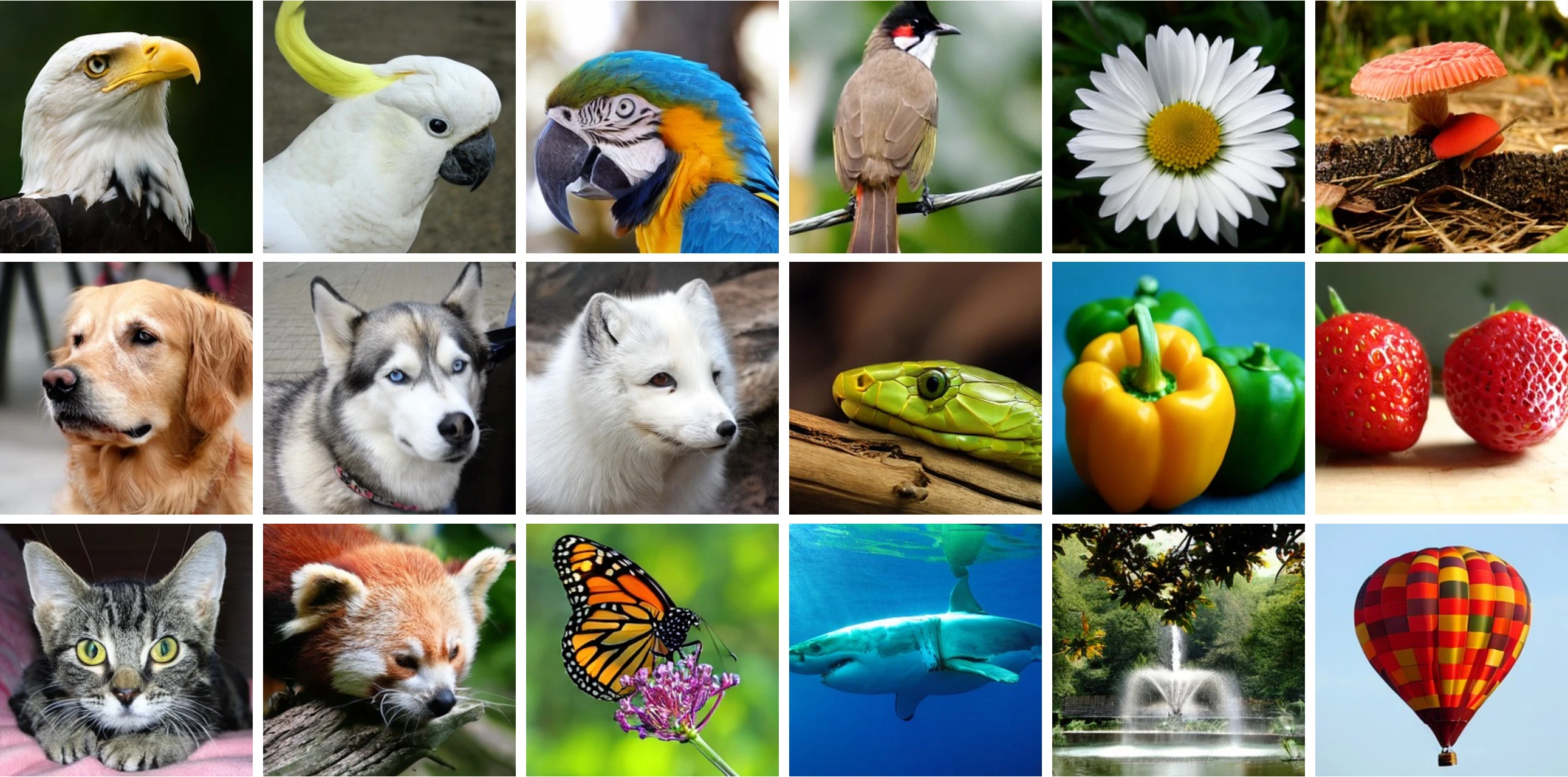

diffusers API, no custom wrapper neededpip install diffusers>=0.33.0 torch>=2.3.1
Loading the VAE is as easy as:
from diffusers import AutoencoderKL
vae = AutoencoderKL.from_pretrained("REPA-E/e2e-flux-vae").to("cuda")Full workflow for encoding and decoding images:
from io import BytesIO
import requests
from diffusers import AutoencoderKL
import numpy as np
import torch
from PIL import Image
response = requests.get("https://raw.githubusercontent.com/End2End-Diffusion/fuse-dit/main/assets/example.png")
device = "cuda"
image = torch.from_numpy(
np.array(
Image.open(BytesIO(response.content))
)
).permute(2, 0, 1).unsqueeze(0).to(torch.float32) / 127.5 - 1
image = image.to(device)
vae = AutoencoderKL.from_pretrained("REPA-E/e2e-flux-vae").to(device)
with torch.no_grad():
latents = vae.encode(image).latent_dist.sample()
reconstructed = vae.decode(latents).samplepip install diffusers>=0.33.0 torch>=2.3.1
Loading the VAE is as easy as:
from diffusers import AutoencoderKL
vae = AutoencoderKL.from_pretrained("REPA-E/e2e-sd3.5-vae").to("cuda")Full workflow for encoding and decoding images:
from io import BytesIO
import requests
from diffusers import AutoencoderKL
import numpy as np
import torch
from PIL import Image
response = requests.get("https://raw.githubusercontent.com/End2End-Diffusion/fuse-dit/main/assets/example.png")
device = "cuda"
image = torch.from_numpy(
np.array(
Image.open(BytesIO(response.content))
)
).permute(2, 0, 1).unsqueeze(0).to(torch.float32) / 127.5 - 1
image = image.to(device)
vae = AutoencoderKL.from_pretrained("REPA-E/e2e-sd3.5-vae").to(device)
with torch.no_grad():
latents = vae.encode(image).latent_dist.sample()
reconstructed = vae.decode(latents).samplepip install diffusers>=0.35.0 torch>=2.5.0
Loading the VAE is as easy as:
from diffusers import AutoencoderKLQwenImage
vae = AutoencoderKLQwenImage.from_pretrained("REPA-E/e2e-qwenimage-vae").to("cuda")Full workflow for encoding and decoding images (note the frame dimension handling):
from io import BytesIO
import requests
from diffusers import AutoencoderKLQwenImage
import numpy as np
import torch
from PIL import Image
response = requests.get("https://raw.githubusercontent.com/End2End-Diffusion/fuse-dit/main/assets/example.png")
device = "cuda"
image = torch.from_numpy(
np.array(
Image.open(BytesIO(response.content))
)
).permute(2, 0, 1).unsqueeze(0).to(torch.float32) / 127.5 - 1
image = image.to(device)
vae = AutoencoderKLQwenImage.from_pretrained("REPA-E/e2e-qwenimage-vae").to(device)
# Add frame dimension (required for QwenImage VAE)
image_ = image.unsqueeze(2)
with torch.no_grad():
latents = vae.encode(image_).latent_dist.sample()
reconstructed = vae.decode(latents).sample
# Remove frame dimension
latents = latents.squeeze(2)
reconstructed = reconstructed.squeeze(2)pip install diffusers>=0.33.0 torch>=2.3.1
Loading the VAE is as easy as:
from diffusers import AutoencoderKL
vae = AutoencoderKL.from_pretrained("REPA-E/e2e-sdvae-hf").to("cuda")Full workflow for encoding and decoding images (512×512 resolution):
from io import BytesIO
import requests
from diffusers import AutoencoderKL
import numpy as np
import torch
from PIL import Image
response = requests.get("https://raw.githubusercontent.com/End2End-Diffusion/fuse-dit/main/assets/example.png")
device = "cuda"
image = torch.from_numpy(
np.array(
Image.open(BytesIO(response.content)).resize((512, 512))
)
).permute(2, 0, 1).unsqueeze(0).to(torch.float32) / 127.5 - 1
image = image.to(device)
vae = AutoencoderKL.from_pretrained("REPA-E/e2e-sdvae-hf").to(device)
with torch.no_grad():
latents = vae.encode(image).latent_dist.sample()
reconstructed = vae.decode(latents).samplepip install diffusers>=0.33.0 torch>=2.3.1
Loading the VAE is as easy as:
from diffusers import AutoencoderKL
vae = AutoencoderKL.from_pretrained("REPA-E/e2e-vavae-hf").to("cuda")Full workflow for encoding and decoding images (512×512 resolution):
from io import BytesIO
import requests
from diffusers import AutoencoderKL
import numpy as np
import torch
from PIL import Image
response = requests.get("https://raw.githubusercontent.com/End2End-Diffusion/fuse-dit/main/assets/example.png")
device = "cuda"
image = torch.from_numpy(
np.array(
Image.open(BytesIO(response.content)).resize((512, 512))
)
).permute(2, 0, 1).unsqueeze(0).to(torch.float32) / 127.5 - 1
image = image.to(device)
vae = AutoencoderKL.from_pretrained("REPA-E/e2e-vavae-hf").to(device)
with torch.no_grad():
latents = vae.encode(image).latent_dist.sample()
reconstructed = vae.decode(latents).samplepip install diffusers>=0.33.0 torch>=2.3.1
Loading the VAE is as easy as:
from diffusers import AutoencoderKL
vae = AutoencoderKL.from_pretrained("REPA-E/e2e-invae-hf").to("cuda")Full workflow for encoding and decoding images (512×512 resolution):
from io import BytesIO
import requests
from diffusers import AutoencoderKL
import numpy as np
import torch
from PIL import Image
response = requests.get("https://raw.githubusercontent.com/End2End-Diffusion/fuse-dit/main/assets/example.png")
device = "cuda"
image = torch.from_numpy(
np.array(
Image.open(BytesIO(response.content)).resize((512, 512))
)
).permute(2, 0, 1).unsqueeze(0).to(torch.float32) / 127.5 - 1
image = image.to(device)
vae = AutoencoderKL.from_pretrained("REPA-E/e2e-invae-hf").to(device)
with torch.no_grad():
latents = vae.encode(image).latent_dist.sample()
reconstructed = vae.decode(latents).sampleFor complete usage examples and integration with diffusion models, see the individual model cards on Hugging Face.
We address a fundamental question: Can latent diffusion models and their VAE tokenizer be trained end-to-end? While training both components jointly with standard diffusion loss is observed to be ineffective — often degrading final performance — we show that this limitation can be overcome using a simple representation-alignment (REPA) loss. Our proposed method, REPA-E, enables stable and effective joint training of both the VAE and the diffusion model, achieving state-of-the-art FID scores of 1.12 and 1.69 with and without classifier-free guidance on ImageNet 256×256.

1. Accelerated Generation Performance: REPA-E significantly speeds up diffusion training by over 17× and 45× compared to REPA and vanilla training recipes, respectively, while achieving superior quality.
2. Improved VAE Latent-Space Structure: Joint tuning adaptively enhances latent space structure across different VAE architectures, addressing their specific limitations without explicit regularization.
3. Superior Drop-in VAE Replacements: The resulting E2E-VAE serves as a drop-in replacement for existing VAEs (e.g., SD-VAE), improving convergence and generation quality across diverse LDM architectures.
4. Effective From-Scratch Training: REPA-E enables joint training of both VAE and LDM from scratch, still achieving superior performance compared to traditional training approaches.
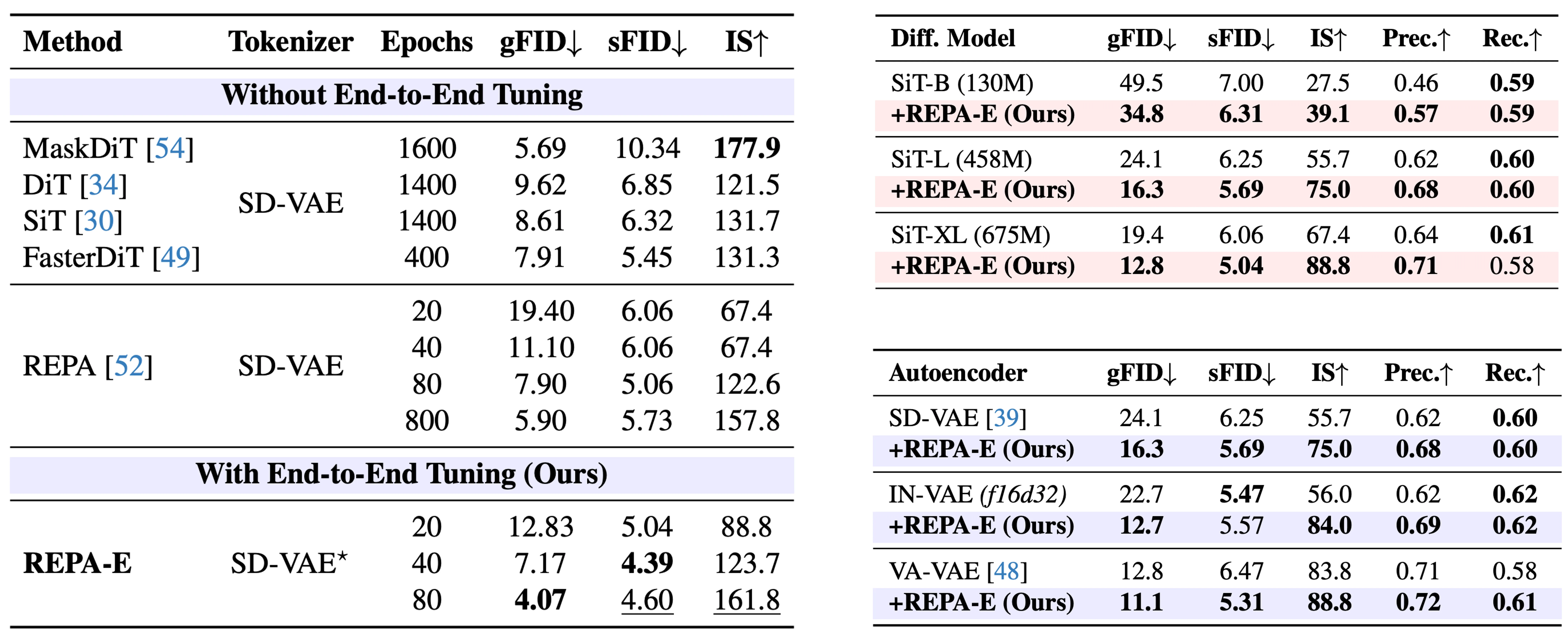
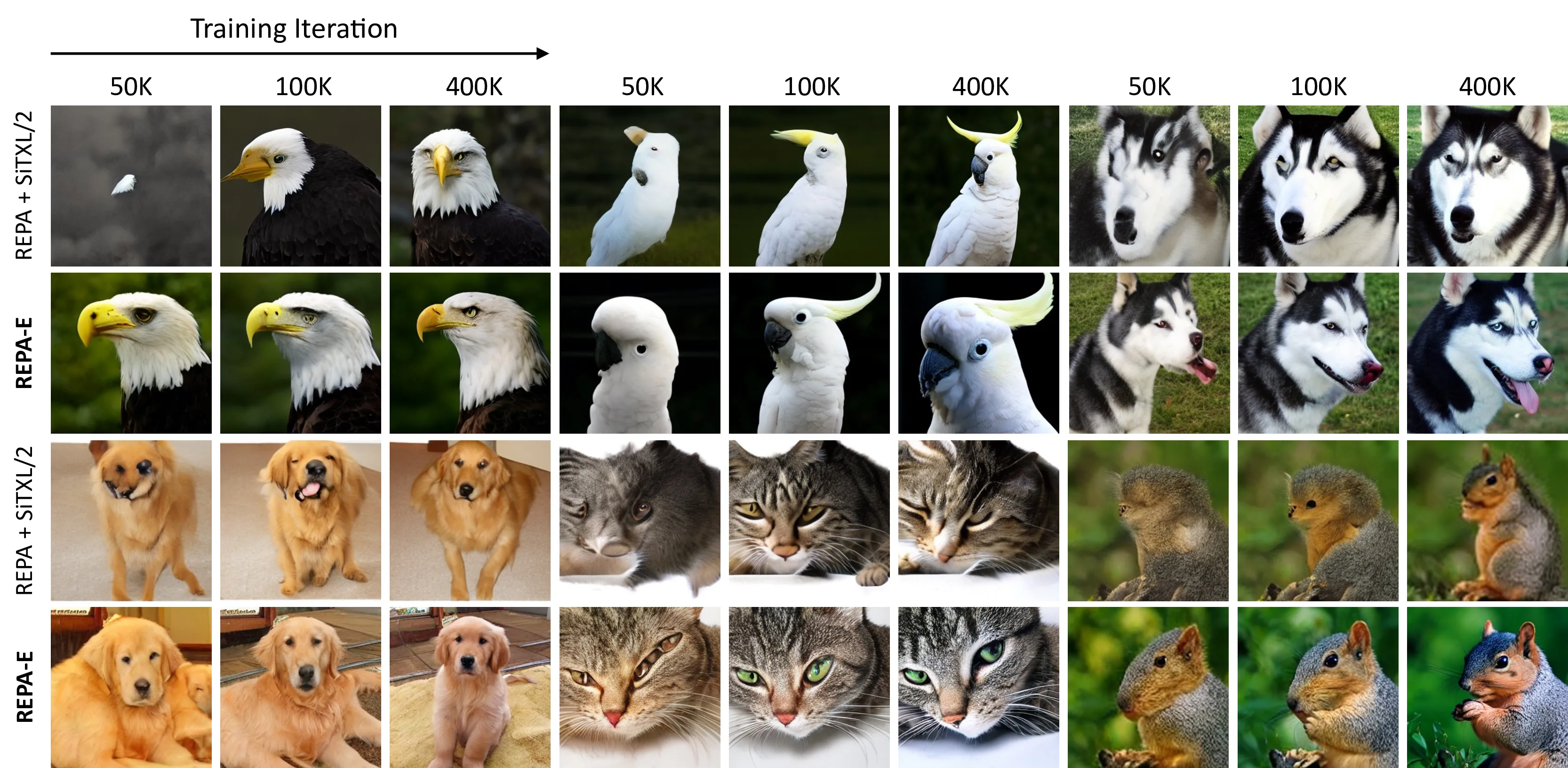
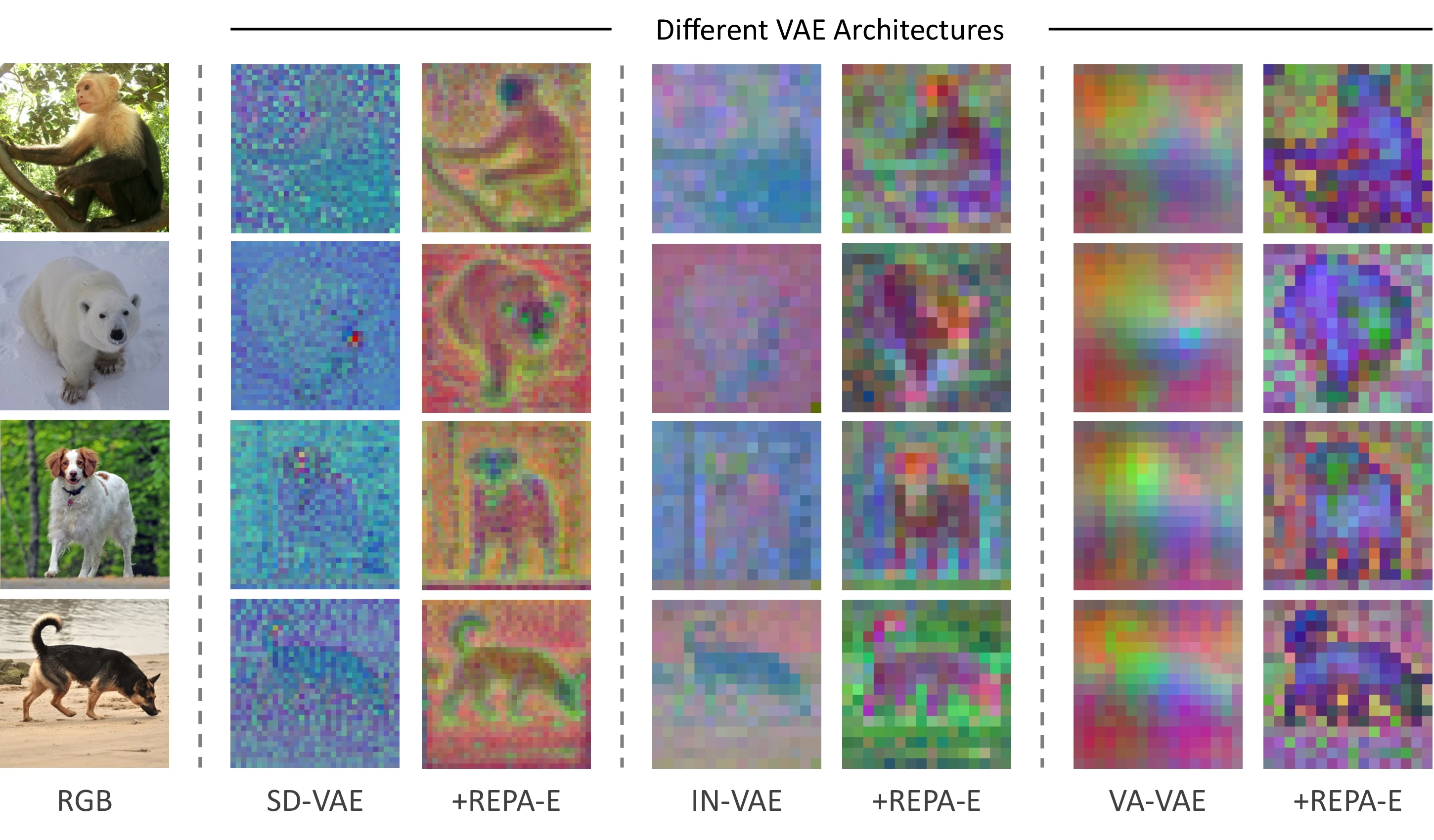

Note: Results for the 800-epoch checkpoints of REPA, LightningDiT, and E2E-VAE in the left table are evaluated with 50 images per class (class-balanced sampling).
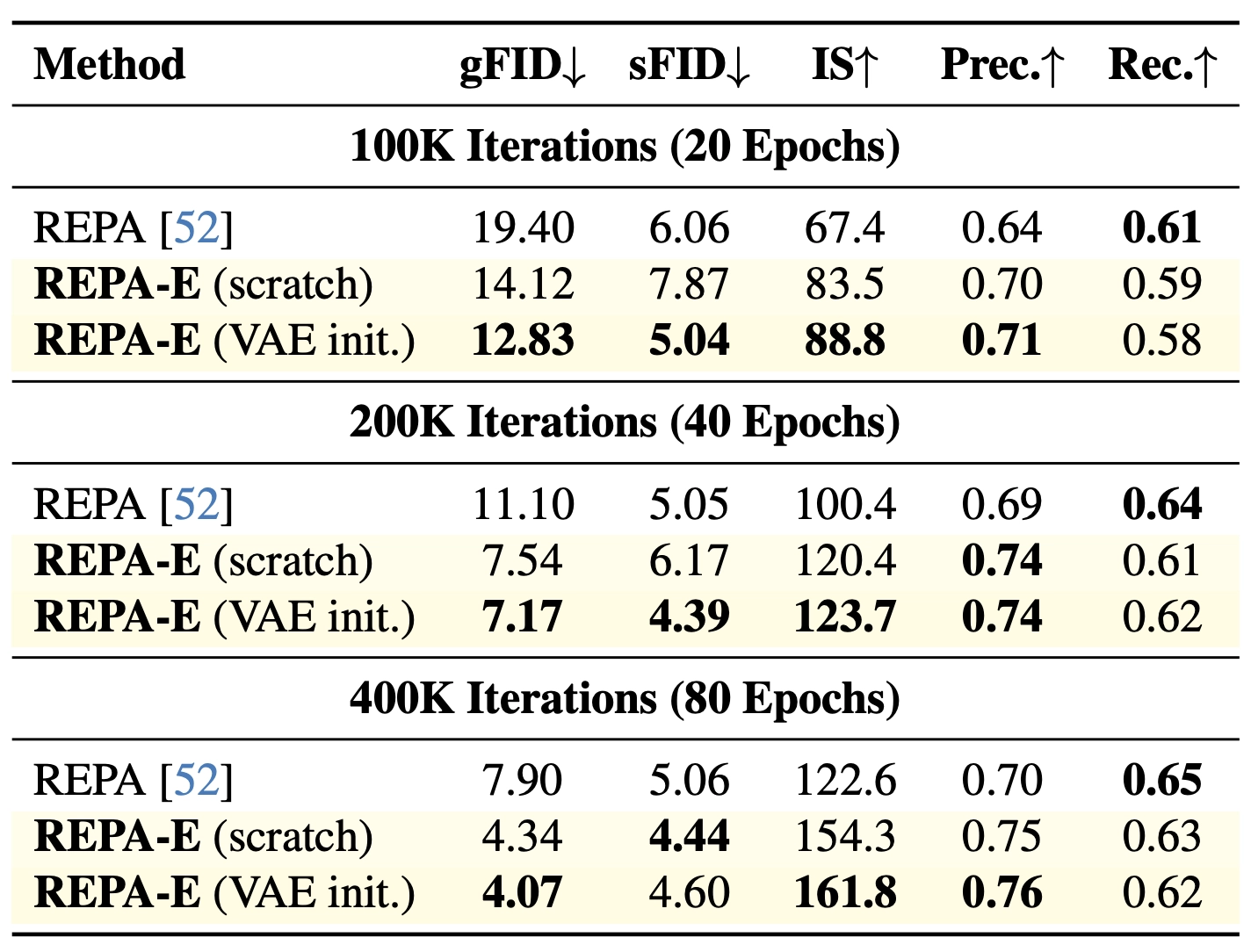
@article{leng2025repae,
title={REPA-E: Unlocking VAE for End-to-End Tuning with Latent Diffusion Transformers},
author={Xingjian Leng and Jaskirat Singh and Yunzhong Hou and Zhenchang Xing and Saining Xie and Liang Zheng},
year={2025},
journal={arXiv preprint arXiv:2504.10483},
}